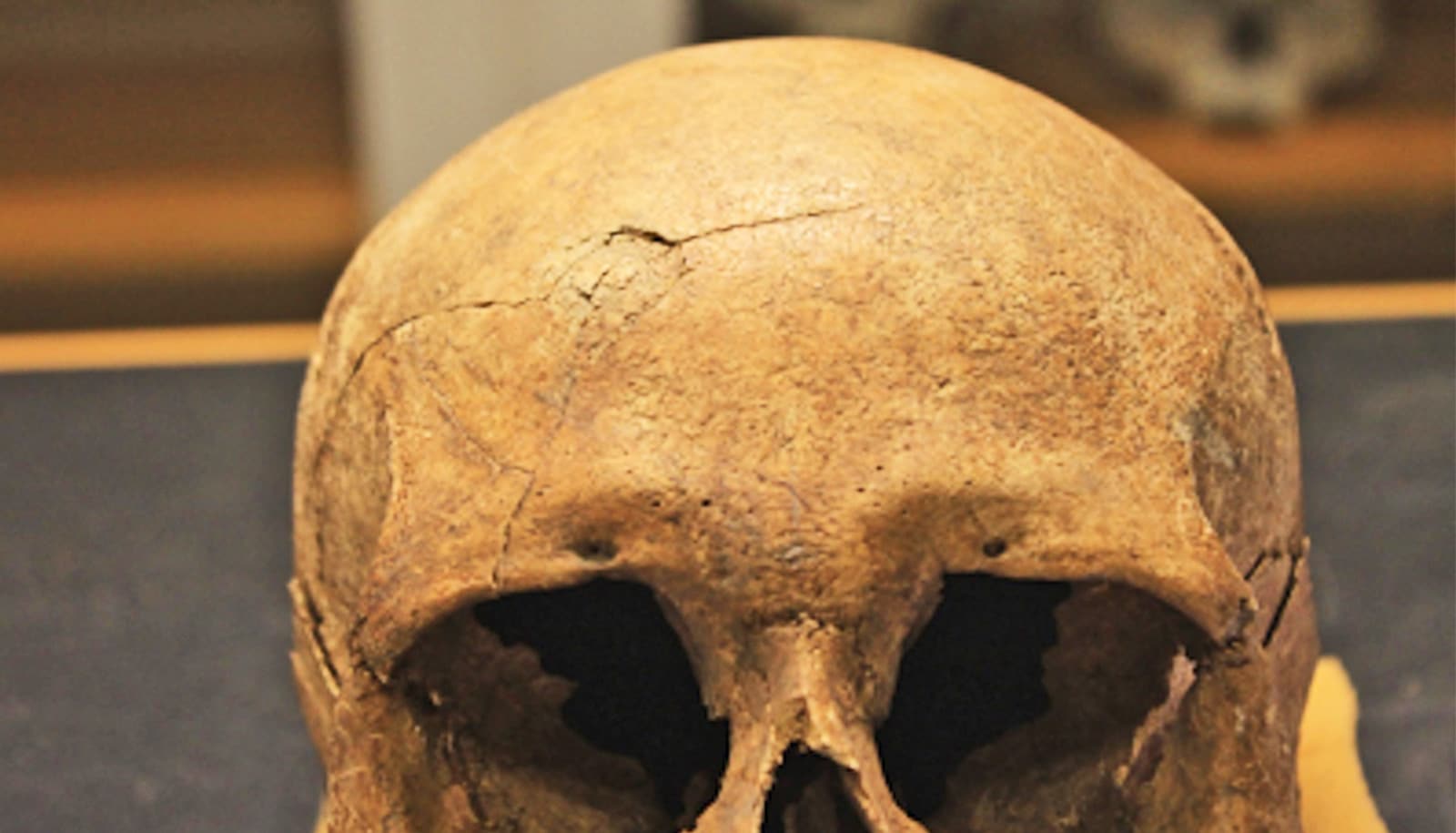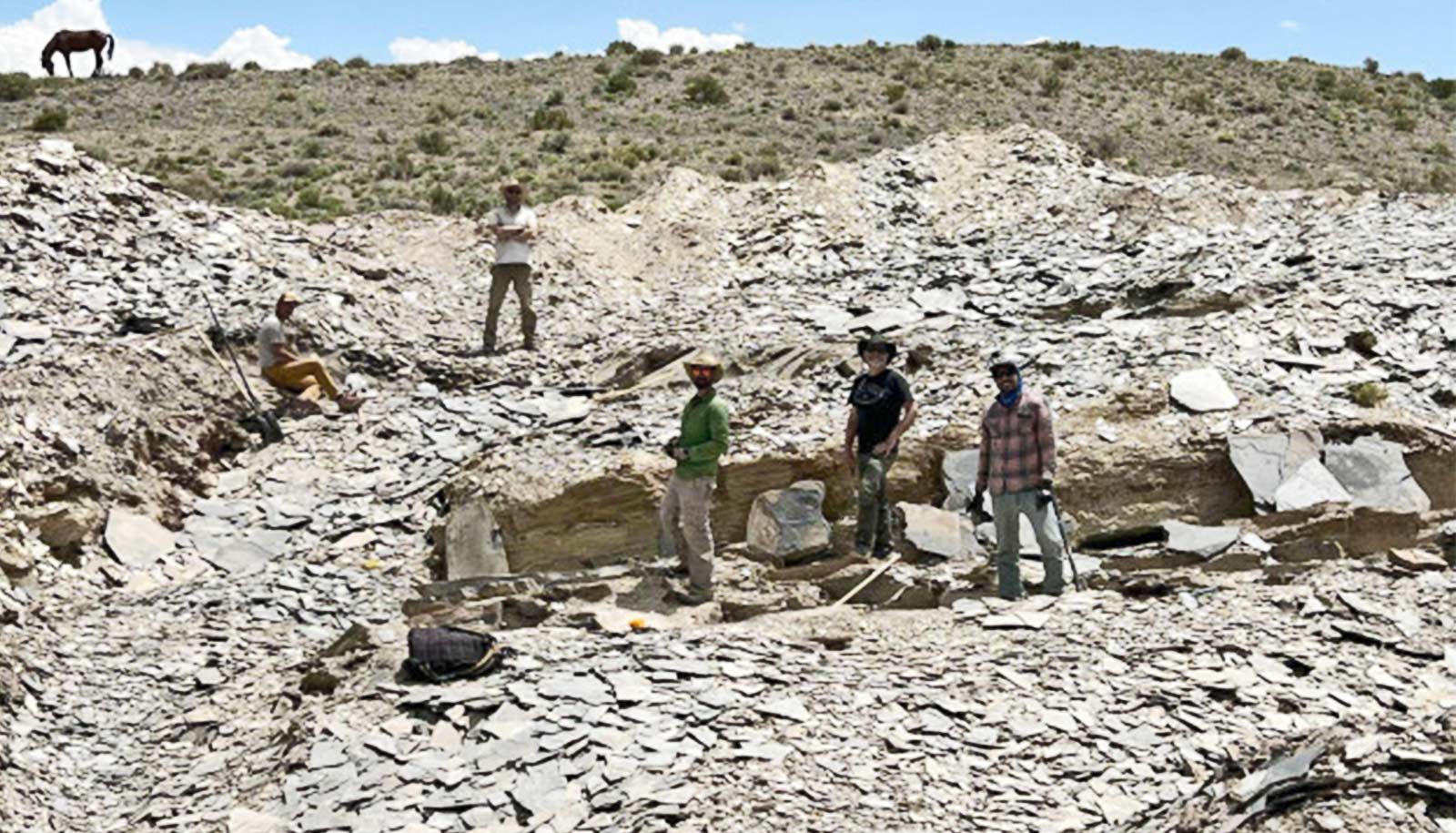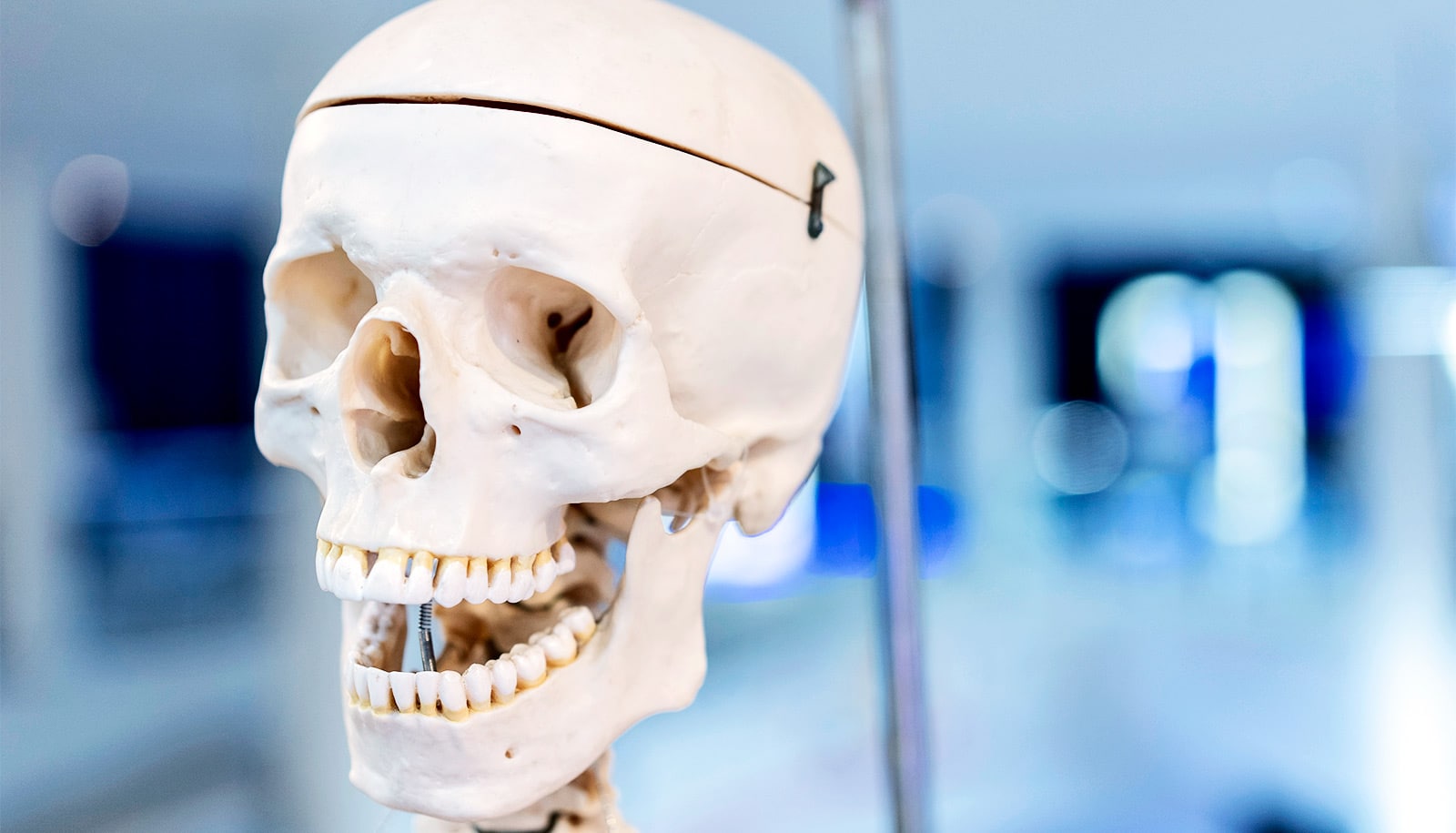Paleontologists conducted a second excavation at the Michigan farm where the skull, tusks, and dozens of intact bones of an ice age mammoth were pulled from the ground in late 2015.
Nothing that dramatic happened during the recent two-day follow-up. But 40 additional bones and bone fragments from the “Bristle Mammoth” were recovered, and researchers were able to thoroughly document the site—something that wasn’t possible two years ago, in the one-day rush to get the skull and tusks out of the ground.
“…as a result of this second excavation, we’ll have more insight into what happened here.”
“This return to the Bristle site was absolutely a success. We got the kind of information that we need to do the science right, and we were also able to recover an impressive amount of additional material from this animal,” says Daniel Fisher, director of the University of Michigan Museum of Paleontology who led both Bristle digs and is overseeing the analysis of the bones and the environmental samples.
“So I’m confident that as a result of this second excavation, we’ll have more insight into what happened here.”
Bristle’s farm deserved a second visit in part because a single radiocarbon date from one of the mammoth bones showed the animal to be more than 15,000 years old. Also, several lines of evidence point to human processing of the mammoth carcass for food.
If additional studies substantiate those preliminary findings, the Bristle Mammoth “would represent the earliest instance of human interaction with a mammoth in the eastern Great Lakes basin,” Fisher says.
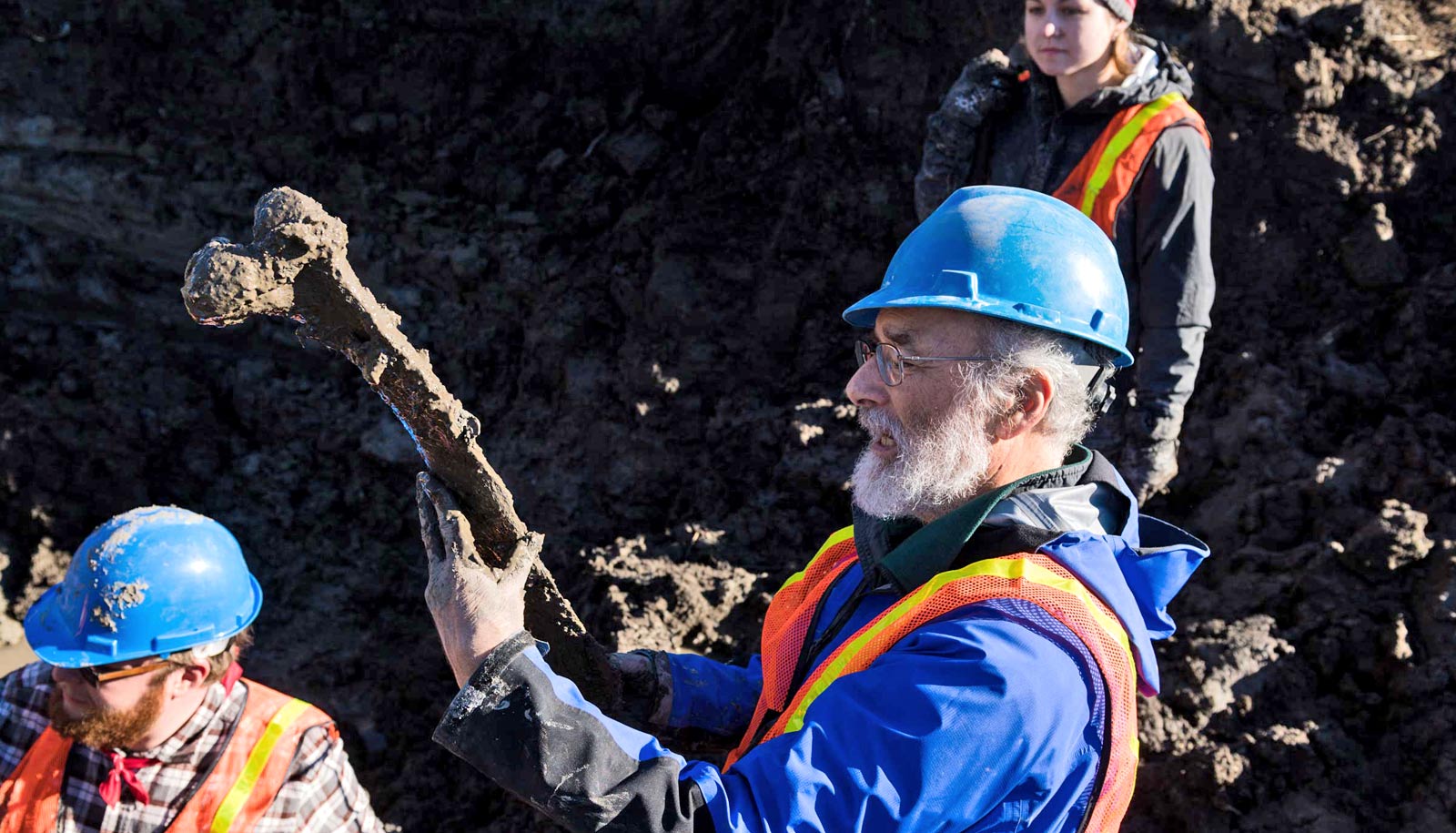
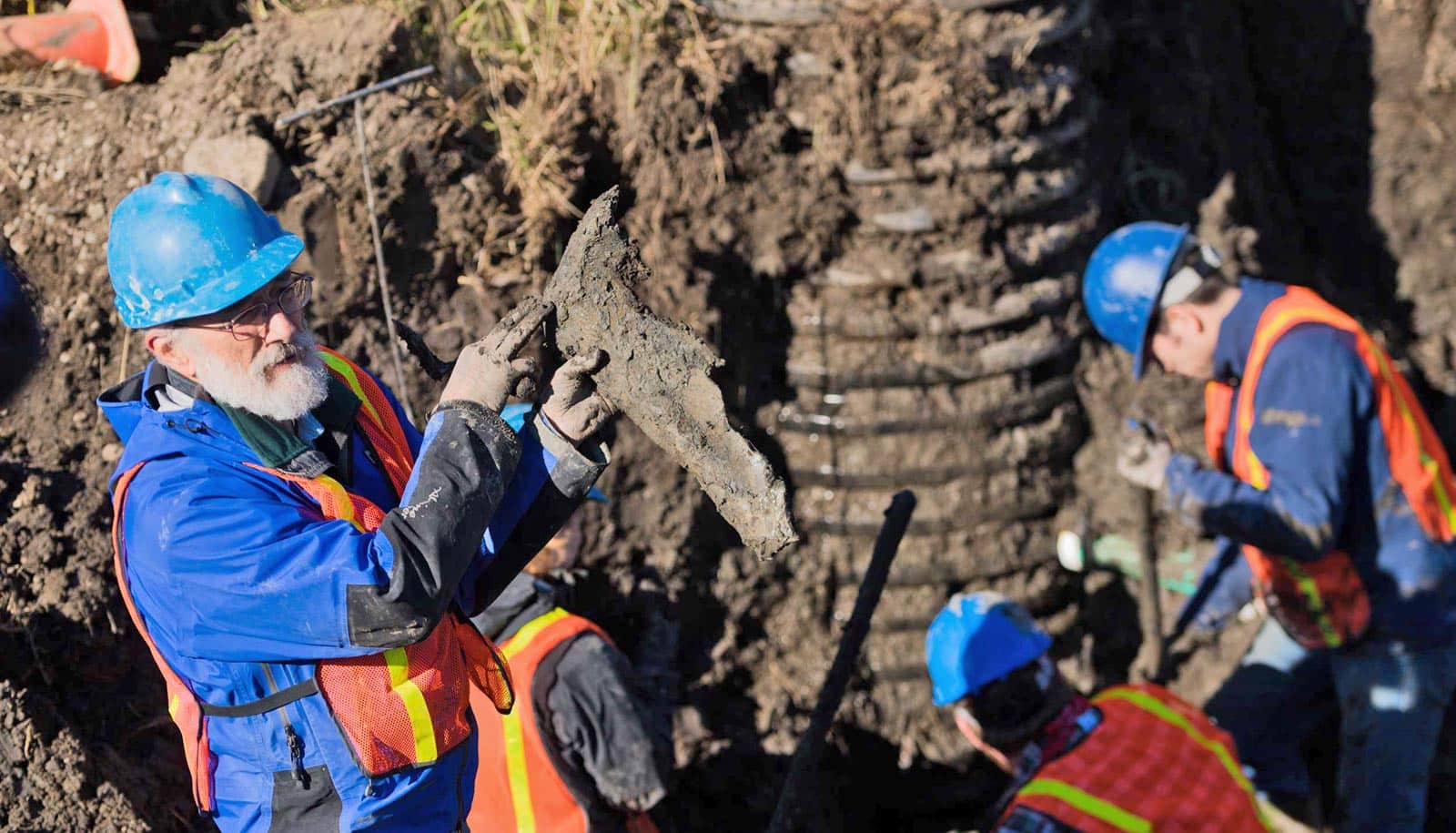
From 9 tons to bones
Researchers tried to make a return trip to the farm for a while but needed to find a time that worked for Fisher, excavator James Bollinger, and farmer James Bristle, who harvested corn from the dig site in October.
“The crops are off, so it’s really a perfect time to do it,” Bristle says. “It was such a hurried thing the first time around. So this is an opportunity to complete the discovery process.”
Bristle renamed his farm Mammoth Acres after that find.
The first mammoth bones turned up while Bristle was installing a drainage system at a low spot in one of his fields. The farmer gave researchers one day to recover whatever remains they could find; after that, the drainage project and his harvest for the year needed to resume.
The farmer later donated the mammoth remains to the University of Michigan, and some of them are now on display at the Museum of Natural History. Last week, additional bones were found in clays that were disturbed in 2015 when a sump pump was installed as part of the drainage project. The newly discovered bones will also be donated to the university, Bristle says.
During the first dig, scientists found 55 to 60 nearly complete mammoth bones, accounting for 30 to 40 percent of the animal’s skeletal mass. The animal was a male in its mid-40s and would have weighed about 9 tons.
In addition to the skull with teeth and tusks, most of the vertebrae and ribs were found, along with parts of the shoulder blades and the pelvis. Notably missing are the limb and foot bones and the tail vertebrae.
The latest dig adds 40 more bones and bone fragments, including several vertebrae, skull fragments, an intact rib, part of a shoulder blade, a piece of the pelvis, and what appears to be part of the mandible.
‘Pure euphoria’
Scott Johnston, a 2017 graduate of earth and environmental sciences who has worked at the Museum of Natural History since he was 14, found a jagged, softball-sized fragment of the mammoth’s skull on Wednesday.
“I knew immediately that it was skull bone because nothing else looks exactly like it,” he says. “The feeling was pure euphoria.”
Nichole Lohrke was a double major in German and evolutionary anthropology two years ago when she heard about the Bristle mammoth discovery. A few months later, she went to work in Fisher’s lab, repairing the Bristle tusks and skull. She added a minor in paleontology, graduated last spring, and on Wednesday found a plum-sized piece of the animal’s skull.
“The first Bristle excavation is what inspired me to get into paleontology,” she says. “I heard about it on the news and thought, ‘That is so cool. I would love to be part of that.’ And now I’m here.”
Sediments and spores
One goal of the second excavation was to find more bones and, possibly, additional evidence of human involvement. But an even higher priority was to reconstruct the geological context of the mammoth remains, something that simply wasn’t possible during 2015’s get-what-you-can-in-a-day dig.
The Bristle bones were found about 10 feet below the current land surface, in fine-grained clays and marls from the bottom of a pond that no longer exists.
For the recent excavation, researchers dug a pit just south of the October 2015 location and collected sediment samples from the layers exposed in one of the walls. They collected samples at 2-inch intervals, from a couple feet below the top of the pit wall to the gravel at its bottom, a distance of about 13 feet. The gravel at the bottom of the pit is from a time 17,000 to 18,000 years ago, when glacial ice still covered the region, Fisher says.
Organic material from some of the samples will be radiocarbon-dated. If the dates grow steadily older with increasing depth, as expected, the researchers can have increased confidence in the dates of the Bristle Mammoth bones.
Did a comet cause freeze that killed mammoths?
Pollen grains and fungal spores will be extracted from the sediments and analyzed to help reconstruct ancient environments and to provide proper context for the mammoth find.
Spores from the Sporormiella fungus are found today in the dung of domestic livestock animals as well as wild herbivores. The spores are preserved in recognizable form for thousands of years and are used in paleoecological studies as a proxy for the abundance of ancient grazing mammals such as mammoths.
First humans in Michigan
If the fungal spores are found in the various ancient sediment layers at the Bristle site, their distribution could reveal when grazing mammals were present at the site as well as the timing of their local extinction.
Pollen grains would show what types of plants were growing at the time of the Bristle Mammoth and how the vegetation mix changed over time as the climate shifted.
The oldest well-documented, published evidence for humans in Michigan is about 13,000 years ago, the age of the spear-wielding Clovis hunters. But several lines of evidence from the Bristle Mammoth, including the single radiocarbon date, imply that humans processed the carcass more than 2,000 years before the Clovis hunters arrived.
Mammoth found on Michigan farm was likely butchered
The Bristle Mammoth remains were found in pond sediments. Fisher suspects early humans butchered the carcass and placed selected portions at the bottom of the pond for storage, using boulders to anchor their meat stash.
Examination of the sediments revealed during this week’s dig suggest the pond was small, perhaps only 20 to 30 yards across, says Fisher, a professor in the earth and environmental sciences department and in the ecology and evolutionary biology department.
Source: University of Michigan

